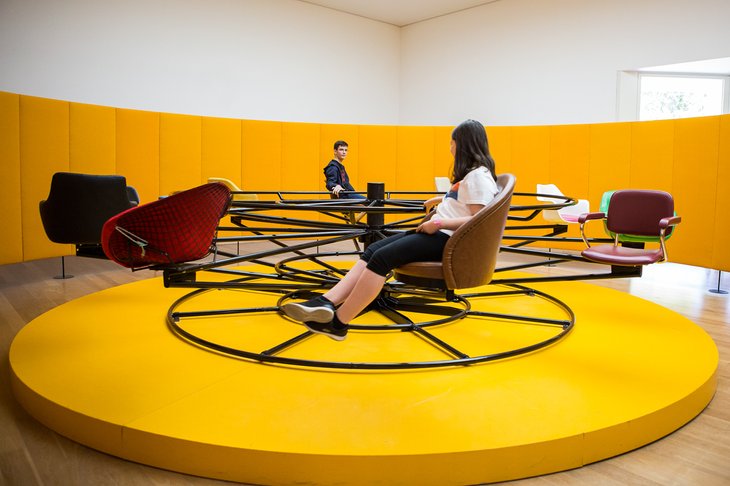Wet day in Porto? Visit the best museums in town
Article

No need to feel blue because of the rainy weather! Porto offers some of the best museums, as they can be the best places of entertainment on such days.
Porto is filled with History, which means lots of great museums to visit. The art and activities museums offer may very well be what your creative mind needs right now. In other words, museums can offer art and a cheap way to give you the tools to finding a formidable day in Porto.
Check these out:
Museum of Porto Wine, in Ribeira
The new "Museu do Vinho do Porto", facing the river Douro at the Rua da Reboleira will let you in the relevance of the Invicta regarding wine trade. There are boat models, metrology equipment, documents, paintings and furniture. All the items are part of the Porto City Hall Collection.
National Museum Soares dos Reis, in Cedofeita
One of the finest in town, this museum features engravings, ceramics, painting and sculpture, jewellery or cutlery, textiles and glassware from different eras, with particular attention being given to the paintings by Aurélia de Sousa, António Carneiro, Silva Porto and Henrique Pousão, as well as Flemish and Dutch art painting.
Other highlights are the Japanese screens, Chinese porcelain, and Iron Age adornments, just to mention a few.
Pharmacy Museum of Porto, in Pinheiro Manso
The pharmacy seen from a different perspective, a historic one, presenting valuable pieces that cover four million years and several civilizations.
In addition, two ancient pharmacies were literally installed in this venue.
Museum of Contemporary Art of Serralves, in Porto
This museum is part of the international roadmap of contemporary art, whose building was designed by Álvaro Siza Vieira.
Usually, the museum hosts several collections simultaneously, featuring the oeuvre by Portuguese and foreign artists.
It is almost mandatory to stroll by the exquisite Park of Serralves and to visit the magnificent art deco house.
National Press Museum, in Campanhã
A journey through the history of the press, presenting its various stages and equipment, as well as documents, with special highlight to the rarities of a 18th century printer or a 1900 manual guillotine.
House-Museum Guerra Junqueiro, in Sé
This was he first House-Museum of Porto, inaugurated in 1942. It is located in the back of Sé.
The building and the acquis were donated by Maria Isabel, daughter of Guerra Junqueiro, to Porto City Hall, thus complying with her father's will.
Though it is lesser known, the museum features one of the best decorative arts collection in Portugal, from the fifteenth to the nineteenth centuries.
House- Museum Marta Ortigão Sampaio, downtown
This modernist building hosts one of the most valuable objects of the work by the painter Aurélia de Souza (1866-1922), the maternal aunt of Marta Ortigão Sampaio, the donor of this House-Museum, which is classified as a Public Interest Monument.
Museum of Porto Football Club, in Campanhã
This venue features 27 thematic areas, equivalent to a football stadium. The possibilities for interactivity, combining history and technology are endless.
MMIPO - Museum of Misericórdia of Porto, downtown
The MMIPO - Museu da Misericórdia do Porto preserves a small but important art collection, namely the "Fons Vitae" (1517-1520, Brussels, author unknown) Flemish painting, bearing witness to the Portuguese Discoveries, when Portugal commissioned artwork to Flanders.
Casa do Infante, in Miragaia
It gives visitors a trip to the museological circuit, covering the roman and medieval occupation of the riverside area of Porto. This museum also houses the Municipal Historic Archive of Porto.
Romantic Museum of Quinta da Macieirinha, in Massarelos
The museum reproduces the 19th century Romanticism in Portugal and in Porto. It recreates the characteristic of a bourgeois house of that time.
Also worthy visiting are the Garden and the entire enveloping area, known as the Paths of the Romantic (Caminhos do Romântico).
Jewish Museum, in Campo Alegre
Visitors get to know the synagogue Kadoorie Mekor Haim, visiting its inside and appreciating several objects and documents that retrace Judaism in Portugal, especially in Porto.
Museum of Transport and Communications, in Miragaia
This venue, which once was a busy Customs building, hosts different exhibitions, namely the vehicles of all of the Presidents of the Republic, until present time.
It also houses the canvas by painter Júlio Resende, which led to the tile panel by the Ribeira tunnel.
Porto Military Museum, in Bonfim
It combines military objects of Portuguese and European origin, at large.
It is worth pinpointing the collection of 12.000 little tin soldiers representing armies from all around the globe, conventional weapons, or machine guns. In addition, there is a sword that is said to have belonged to D. Afonso Henriques, nicknamed the Conqueror (Portuguese: O Conquistador), the Founder of the Nation.
Materials Bank, in Cedofeita
Not quite a museum per se, but rather a venue that features construction and decorative objects from the architecture in Porto, such as tiles (azulejos), plaster and iron.
The Tramway Museum, in Porto
The museum's mission is to preserve the urban rail transport of Porto. It is located in front of the river Douro, and it enables visitors to "learn, experiment and know up close, the history and the development, as well as the socio-economic impact of this pubic transport in Porto".